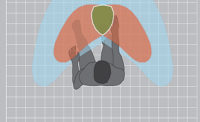Recently, I was consulting with a procurement group, one of its OEM customers, and a product engineering firm. The goal was to find ways to reduce the cost of a particular product.
There are two categories for a company’s balance sheet: the income side and the expense side. We want expenses to be as small as possible and income to be large enough to offset expenses and earn a profit. At the same time, we want to keep the cost of the product as low as possible to meet the customer’s value expectations: Customer Value = Benefit – Cost.
Expenses are subtracted from a company’s revenues to determine its net income or net loss for a given period. Examples of expenses include cost of goods sold; salaries and wages; rent and utilities; advertising and marketing; insurance; and interest.
Manufacturers rely heavily on procurement personnel throughout a product’s life cycle to achieve the financial objectives of the organization and the project. From the beginning, procurement staff are involved in the development of the supply base. They will scour the supply base to find the best cost with respect to the attributes and quality requirements of the product as articulated in technical documents from the design and manufacturing team.
Once the product is designed and the supply chain has been secured, the amount of time procurement folks are engaged will be reduced. But, if you have spent any time in automotive product development and manufacturing, you will know that annual cost reduction targets are typically imposed after the initial material acquisition and production date. The procurement team will be involved in these efforts. However, there comes a point when cost improvements will be difficult or impossible without altering the manufacturing process or the product components. There are limits to material cost improvements if the product and manufacturing lines are unalterable.
The Challenge of Long-Standing Products
At some point, reducing the cost of a long-standing product and manufacturing line becomes increasingly difficult. The amount of cost saved isn’t worth the effort spent to get there. Without some radical intervention, cost reduction of a constrained system will be bound by the law of diminishing returns.
To further improve efficiency or reduce the cost of production and the product, we will need to explore alternatives and invest in research. When I worked in the automotive industry, I always found it funny that engineers were still expected to reduce cost by 3 to 6 percent annually even for a product that had been in use for 15 years and had already gone through multiple cost rationalization efforts. After 15 years, processes have been honed and material contracts are long-standing.
This was the dilemma faced by the procurement group, the OEM, and the engineering firm I was meeting with. For the most part, the ideas presented to the OEM were focused on material acquisition and process improvement. That made sense. The procurement group had a lot of experience in alternate sourcing.
I was at the meeting because of my expertise in product development. One component of the product was made from aluminum, and it was a significant source of cost in the product. The procurement group was pushing to find a different supplier for the aluminum. I wondered if the part had to be made from aluminum at all.
Product demand is not static
In my research, I found alternative materials for the customer’s application. I couldn’t say for certain if these alternatives would meet the customer’s needs, only that similar companies in this industry have been able to use the materials in their applications. When I raised this in the discussion, there was little or no reaction.
There was no guarantee that my suggested alternatives would work, but they cost less and were more widely available worldwide than the aluminum the manufacturer was currently using. The manufacturer would need to compare the materials to see for itself.
A paper analysis of the materials—comparing properties such as hardness, durability and dimensional stability—would be a great place to start. From there, the manufacturer could run experiments, identify the processes that would be needed to use the new material, and then run the line as an experiment to see if the revised product was possible. Methodologies like the Shewhart or Deming cycles would help guide these experiments.
The Challenge of Long-Standing Products
We have many tools for cost improvement. Some do not need extensive technical or mathematical prowess. These tools include value engineering; should costing; De Bono’s Six Thinking Hats; the Delphi method; nominal group technique; teardowns; total quality management; Six Sigma; and lean manufacturing. (I review these tools in my new book, Reducing Process Costs with Lean, Six Sigma and Value Engineering Techniques, co-authored with Kim H. Pries.)
The longer a product runs, the more we need other approaches to reduce cost. Rather than rely so heavily on our procurement friends, think broader. Consider the material itself, the processes, the level of automation, and improving production in other ways to reduce waste. Cost improvement is important in most organizations, especially in times of high inflation or dynamic material costs. At some point in the product life cycle, we will need to change our approach.
About the Author
The author of numerous books on project management, Jon has held engineering and management positions at Volvo Trucks, PACCAR and other companies. Email Jon at jon.quigley@valuetransform.com




